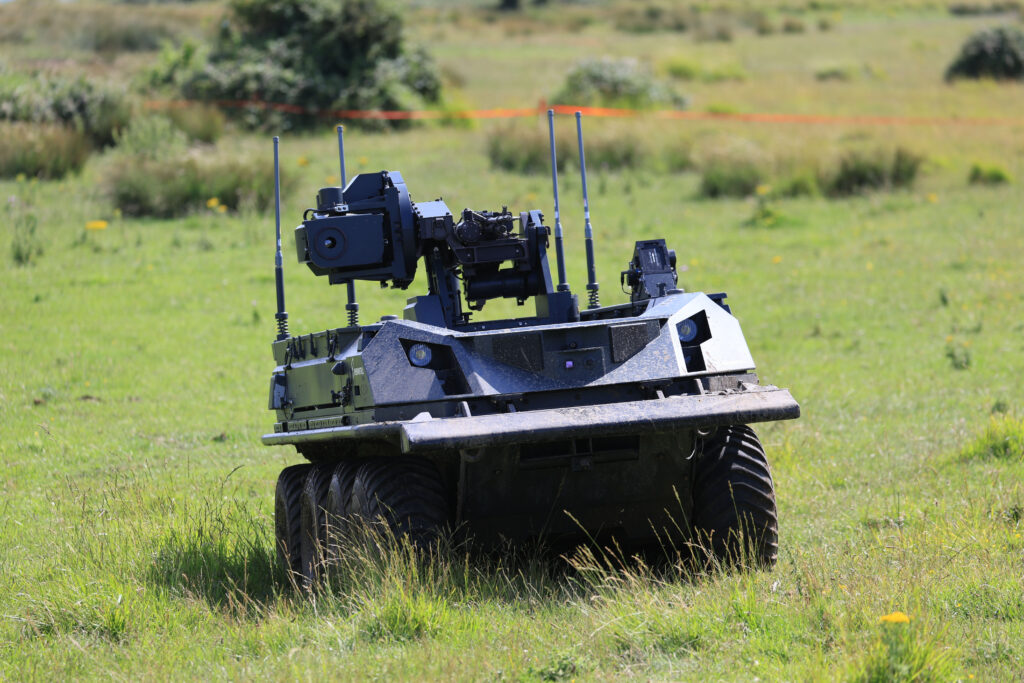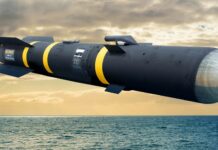On 18 July 2023 the United Kingdom released a long-awaited Defence Command Paper setting out how the British Armed Forces will adapt to the lessons of the Russo-Ukrainian War. Limited by financial realities, the new document is long on words but short on tangible detail. Nevertheless, the measures it contains offer the prospect of a more resilient and effective military over time.
Responding to a Changing World
Russia’s invasion of Ukraine in February 2022 has seen countries across Europe scramble to adapt their defences to meet the changed geopolitical landscape. In March 2023, the United Kingdom revealed its own response to the new threat environment with the publication of an updated security strategy, the Integrated Review Refresh 2023: Responding to a more contested and volatile world (IRR23). Building on an earlier strategic review published in 2021, this revised security blueprint affirmed its predecessor’s focus on responding to a more competitive and fractured world order typified by the varying challenges posed by Russia and China. However, IRR23 also concluded that the “transition into a multipolar, fragmented and contested world has happened more quickly and definitively than anticipated.”
Whilst IRR23 established a revised strategic framework, it was left to a new Defence Command Paper (DCP23) to provide details of how the capabilities of the British Armed Forces would be altered to reflect the new environment. Entitled Defence’s response to a more contested and volatile world, DCP23 was published on 18 July 2023. Widely anticipated to set out the equipment and personnel changes that would be required to address the acceleration of the threats identified in IRR2023, the new document ultimately offers very little in this regard.

Credit: UK MoD
Restricted by Resources
DCP23 explains its lack of commitment to any new equipment on the basis that this is a deliberate choice fostered by the fact that the decisions on procurement taken during the previous 2021 security review had stood the test of time. This assertion seems disingenuous. Instead, the real basis is more likely a lack of sufficient financial resources to fund significant new acquisitions. The British Ministry of Defence (MoD) has received modest increases to its funding since the start of the Ukrainian War. This has sustained existing procurement programmes, advanced investment in infrastructure in the nuclear sector to support the AUKUS submarine programme, and helped replenish diminished stocks of munitions. However, the overall defence budget has failed to receive the material uplift to its finances envisaged, for example, by Germany’s ‘Zeitenwende’ or even France’s newly-approved military programming law. Whilst more money is planned once economic circumstances allow, this hardly seems an appropriately urgent response to IRR23’s identification of an accelerating decline in the threat environment.
In addition to providing nothing new in the way of acquisition programmes, DCP23 is also disappointing in the lack of information provided in terms of future force structure. This is presumably also largely on the basis that the 2021 plans remain appropriate to the changed circumstances despite ongoing questions about reductions to the size of the British Army at the time of a major European land war. However, the document follows a disconcerting tend in recent British defence documents in being long on the latest ‘buzz-words’ and full of aspirational rhetoric but short on actual detail of the means that will be employed to achieve their ends. For example, DCP 2023 announces the formation of a Global Response Force; an all-domain task force bringing together deployed and high-readiness forces. However, nothing is said about its size, structure or the capabilities it will provide. Similarly, emphasis is given to a Strategic Reserve built around former regular personnel to generate surge capacity and provide expertise in times of crisis. Unfortunately, little is revealed of what is actually envisaged. Throughout the document, it is only rarely that the occasional hard fact is allowed to penetrate the fog of official imprecision and ambiguity.
Steps in the Right Direction
Despite – and possibly even because of these reservations – there is much to commend DCP23. In essence, the lack of new funding means that the document is heavily driven by the need to make the most of existing resources and do more with what is already in hand. Given that DCP23 was published in the same week as a parliamentary report highlighting ongoing inefficiency and waste in British defence procurement, this emphasis is certainly timely. More specifically, the new strategy focuses on enhancements to four key areas to secure and maintain strategic advantage.

Credit: UK MoD
People: Reflecting the global challenge to attract the increasingly skilled workforce demanded by a modern military, DCP23 makes several changes to workforce management. Most importantly, a new ‘Spectrum of Service’ approach will be adopted that reflects the current trend away from lifetime employment with one company or industry towards a ‘portfolio’ career. Under this new approach, it will be easier for somebody joining the British Armed Forces to zig-zag between employment with the military, civil service and industry, as well as between full-time and part-time roles. Other initiatives include looking at military pay in terms of total reward with an eye to making compensation more compelling and attractive. A GBP 400 M (EUR 460M) reallocation of resources to improve service housing is one tangible reflection of this policy. Human resources systems will also be modernised with digital technology to make them more effective.
Innovation and Technology: Perhaps unsurprisingly, DCP23 places science, innovation and technology at the heart of defence modernisation. There is an emphasis on aligning MoD efforts in these areas with wider governmental science and technology goals, with artificial intelligence (AI), engineering biology, future telecommunications, semiconductors and quantum technologies all listed as priorities for investment. However, the GBP 6.6 Bn (EUR 7.6 Bn) allocated to research and development had already been announced previously. There will only be so much that can be done to accelerate work in this field in the absence of new money.
The Relationship with Industry: DCP23 implicity recognises that the MoD’s relationship with the defence sector has not always been optimal by making this a revived area of focus. It is acknowledged that previous acquisition programmes have often taken too long to deliver required capabilities, partly due to over-specification. As such, there will be greater emphasis on buying simpler platforms that can be delivered quickly and then subsequently upgraded as the need arises. The progress achieved with implementing the UK’s National Shipbuilding Strategy is held up as a prime example of the approach the MoD would like to adopt. Within this, the Type 31 frigate acquisition (see article elsewhere in this edition of ESD) is seen as a programme that has produced a platform that is modular by design which thus makes spiral development and adaptation simpler and quicker.
Departmental Reform: Concluding that “ruthless” productivity gains will be required to meet the rapidly changing threat, DCP23 aims to drive a process of cultural and organisational change away from a peacetime mentality, to create a leaner and more effective MoD. The strategy cites the removal of unnecessary layers of bureaucracy that are no longer fit for purpose and work to modernise the function of the MoD’s head office as examples of progress that has already been achieved. Whilst a cynic might point to the distinctly mixed legacy of previous attempts to improve MoD efficiency, renewed efforts in this direction are welcome.
Operationally, these much-needed enhancements are supplemented by a focus on deterrence through warfighting capability, with a welcome emphasis on frequently ignored but vital areas such as logistics and resilience being particularly marked. The recent focus on replenishing ‘hollowed-out’ supplies of munitions that has been given impetus by the Ukraine War is reflected in the reallocation of an additional GBP 2.5 bn (EUR 2.9 bn) over the decade to advance work in this area.

Credit: UK MoD
Conclusion
All-in-all, the new Defence Command Paper seeks to make a virtue of necessity. Faced with a deteriorating security situation but a lack of appreciable new funding, DCP23 attempts to implement a programme of reforms and reprioritisation to make the most of the resources that are already available. If these meet with a measure of success, the British MoD will be much better placed to utilise the improvement in its funding that has been promised once the economic backdrop is more favourable. This outcome is, however, uncertain. The pending departure of respected British Defence Secretary Ben Wallace, who announced he would be standing down shortly before the report’s publication, is a further complication that does not engender confidence. [Editor’s note: Ben Wallace stepped down from his position on 31 August 2023. He was replaced by Grant Schapps]
A more fundamental problem with DCP23 is the contradiction between the acknowledged rapidity with which the level of threat is evolving and the delay to additional resources. The new approach is essentially a gamble that the security situation will not further deteriorate before more concrete enhancements are forthcoming.
Conrad Waters











